16 Menorah Facts Every Jew Should Know
1. The Menorah Is the Chanukah Lamp
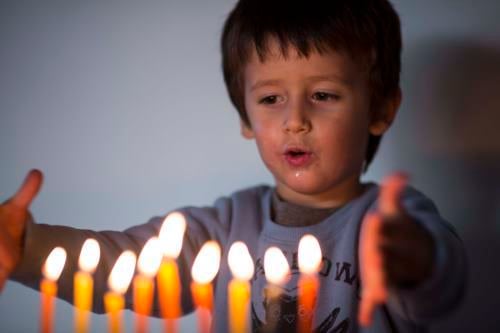
The word menorah is Hebrew for “lamp,” and generally refers to the eight-branched candelabra that we light on the Jewish holiday of Chanukah.
2. The Same Term Refers to the Temple Menorah
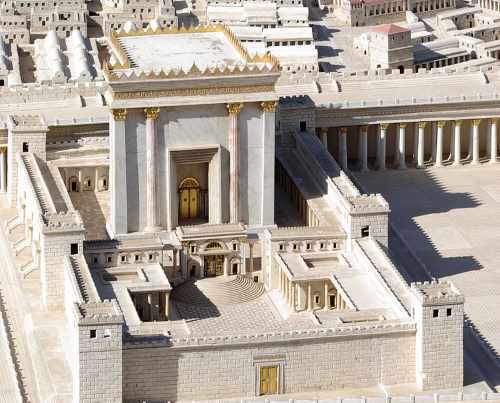
The Holy Temple in Jerusalem (and its predecessor, the Tabernacle) was graced by a seven-branched candelabra, made of pure gold, which was kindled daily. The Temple menorah was at the center of the miracle of the oil that lasted for eight days, which inspired the sages to institute the holiday of Chanukah.
Read: The Chanukah Story
3. Another Flame Is Added Every Night
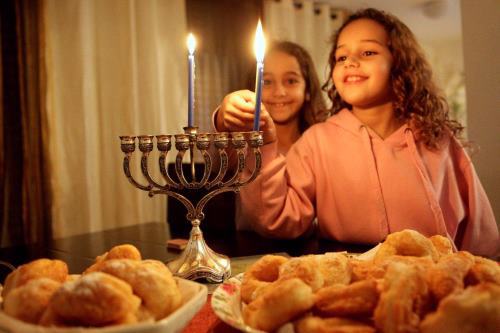
In the days of the Talmud, there were two major academies of learning: Hillel and Shammai. The House of Hillel taught that every night of Chanukah we add another candle—as we do today. The House of Shammai, however, maintained that we begin with eight lights on the first night and light one fewer on each successive night. Universal practice (as codified by halachah) follows the teaching of Hillel.
Read: How to Light the Menorah
4. The Chanukah Menorah Actually Has 9 Flames
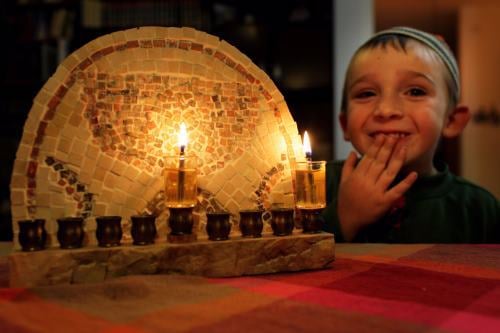
The flames are kindled by the shammash (helper), which is then placed on the menorah itself, set apart from the actual Chanukah flames. As such, the menorah holds 9 flames in total.
5. The Menorah Light Must Not be Used
After the flames are lit, there are traditional songs to be sung, notably Haneirot Halalu and Maoz Tzur. Surprisingly, even though we sit near the flames, we are not to use their sacred light for reading or any other activity (we must use the shammash or another source of light instead).
Read: What’s With the Candles?
6. There Are Blessings and Prayers to Be Said

Before the menorah is lit, we say two blessings, one thanking G‑d for the mitzvah of menorah (by way of the sages, who instituted the holiday) and another acknowledging His miracles “in those days, at this time.” Before lighting the menorah for the first time each year, we also say the shehecheyanu, in which we give thanks for the opportunity to celebrate Chanukah once again.
7. Some Sephardim Have One Menorah Per Household, But Not Ashkenazim
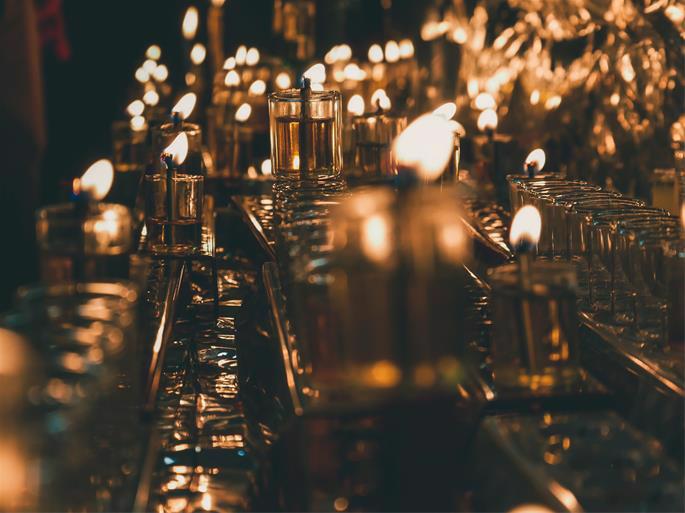
The custom in some Sephardic communities is to have just one menorah per household, so that one can tell at a glance how many candles are lit each night. Interpreting the Talmud’s words differently, standard Ashkenazi custom is for every individual to have his or her own menorah.
Read: Ashkenazim and Sephardim
8. Women Don’t Work While the Flames Are Burning
Common practice in some communities is that married women don’t light a menorah of their own, preferring to be “part” of their husbands’ lightings instead. This is one reason why many women are particular to refrain from performing household tasks while the candles are burning—to show that they are also participants in this mitzvah.
9. There Are Private and Public Menorahs
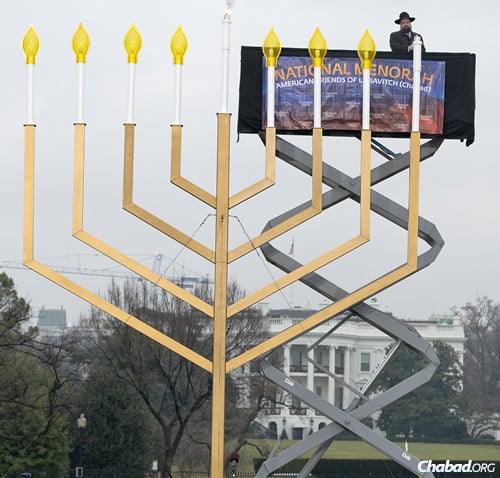
In addition to the menorahs lit in Jewish homes, it is customary to light the menorah in the synagogue even though everyone there will then go home to light their own menorah. In recent years, this phenomenon has expanded into the thousands upon thousands of public menorahs gracing city squares, shopping malls, and other public places all over the world (since these public menorahs are primarily to publicize the Chanukah miracle, not all of them are technically valid menorahs).
10. The Candles Should Be Lit Around Dusk
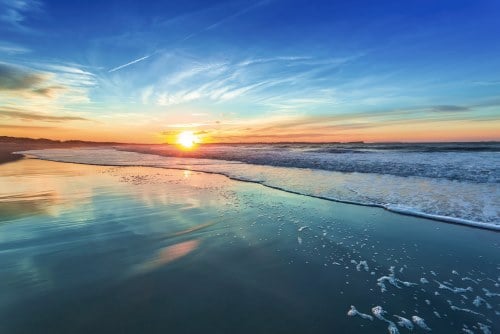
The custom of many communities (including Chabad) is to light the menorah shortly after sunset (except on Friday, when it is lit before the Shabbat candles, and on Saturday night, when it is lit after night has fallen and Havdalah has been said). In other communities, the menorah is kindled after nightfall (approximately 30 minutes after sunset). Read more on the exact time to light here. Either way, the menorah must contain enough fuel to burn for at least 30 minutes after nightfall.
11. Candles and Oil Are Both OK
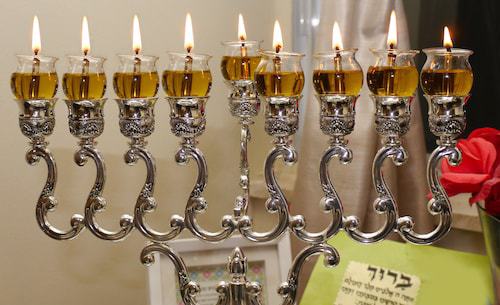
Shopping online or in a Judaica store, you will see menorahs with space for oil lamps or candles. Both are OK, but it is preferable to use olive oil, since the Chanukah menorah reminds us of the Temple menorah (fueled by olive oil) which burned uninterrupted for eight days instead of just one. The Chabad custom is to favor olive oil for personal use, but candles are generally used for the menorah lit in synagogue. No matter what you use, make sure you have enough fuel to burn a half-hour into the night. In a pinch, line up a few tea lights and you have a perfectly kosher menorah.
12. The Flames Should Be Arranged in a Straight Line
Each flame of the menorah must appear distinct to the onlooker. Thus, the eight candles of the menorah should be arranged in a straight line, not set in a semicircle. Similarly, the menorah’s lights should be level or on an even slant, not some randomly higher than others.
13. Many Menorahs Have Backs (to Be Mounted on the Wall)
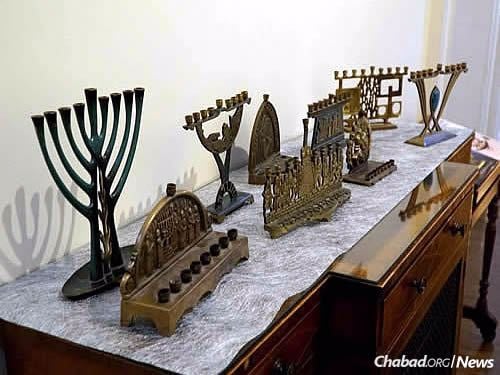
The most common menorah design is of eight arms, branching from a single stem. A very traditional model, however, has the flames lined up on the bottom of the candelabra, backed by a metal plate. In centuries past, these menorahs were often wall-mounted, and the back served to protect the wall from fire and smoke.
14. Modern Hebrew Calls It a Hanukkiah
Many speakers of modern Hebrew may refer to the Chanukah lamp as a hanukkiah (as opposed to ner, which they use to refer to a candle, or menorah, which they use to refer to an electric light). The term “hanukkiah” is a modern invention, attributed to Hemda Ben Yehudah (1873-1951).
Read: 10 Facts About Hebrew
15. The Menorah Is Lit in a Window or Doorway

In Talmudic times, when people lived in houses facing courtyards, which opened up onto the street, it was customary to place the menorah at the entrance(s) to the courtyard. Having the mezuzah on the right and the menorah on the left made for a mitzvah-filled portal. As circumstances changed, the menorah moved indoors. Some prefer to put it at the window, while others (including Chabad) light the menorah inside an internal doorway.
16. The Menorah Must Be Visible to the Public
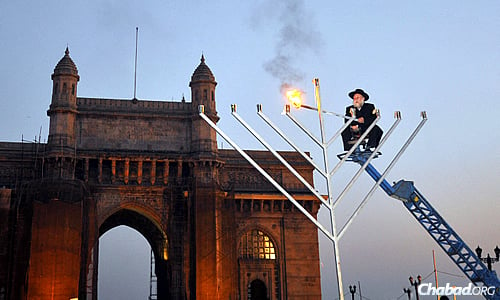
We light the menorah during the early evening, when people (nowadays, members of your household) can be presumed to be up to witness its light and take in its message. If you return home from work late at night, be sure to have at least one witness see you light the menorah.


